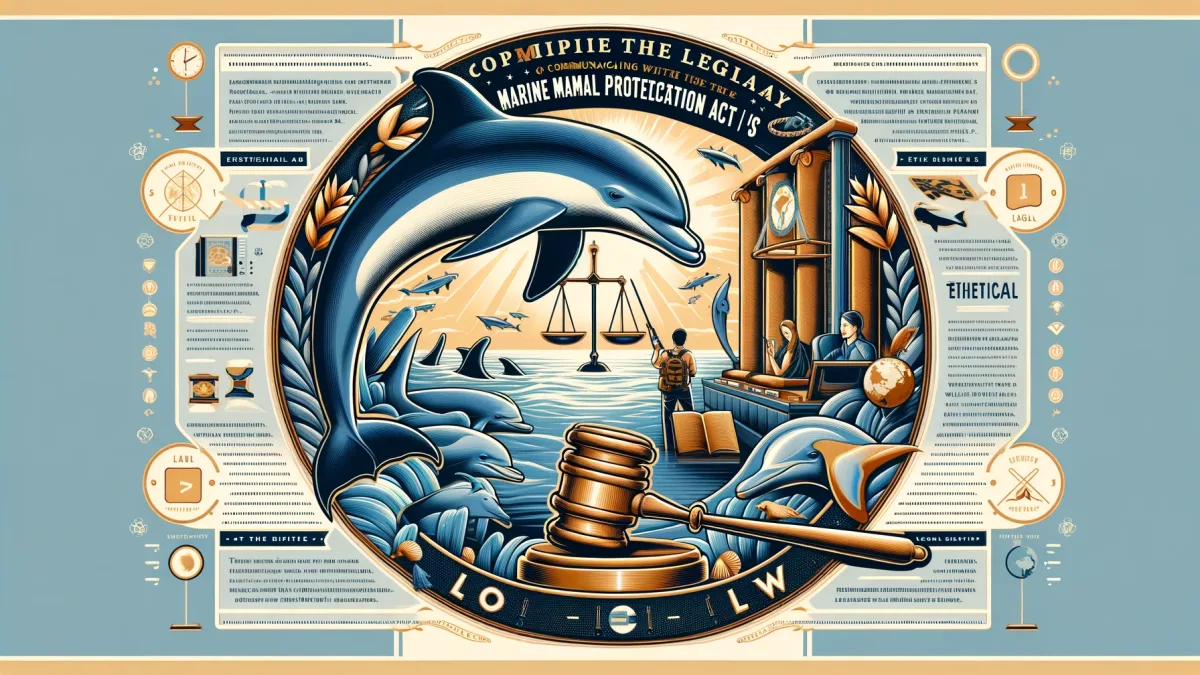The question of whether it is illegal to communicate with dolphins in the United States brings together a unique intersection of marine mammal protection laws, animal welfare regulations, and scientific research protocols. Dolphins are highly intelligent creatures known for their sophisticated communication abilities, and interactions with them are subject to various legal restrictions.
Marine Mammal Protection Act (MMPA)
The primary federal law governing interactions with dolphins in the United States is the Marine Mammal Protection Act of 1972 (MMPA). The MMPA was enacted in response to concerns that certain species of marine mammals were in danger of extinction or depletion due to human activities.
Provisions of the MMPA
Under the MMPA, it is generally illegal to “take” marine mammals in U.S. waters and by U.S. citizens on the high seas. The term “take” is defined broadly to include to harass, hunt, capture, or kill any marine mammal, or attempt to do so. However, the MMPA does allow for certain exceptions, including for scientific research, public display, and incidental take during commercial fishing operations.
Permits and Authorizations
Individuals or organizations, such as researchers or marine parks, who wish to engage in activities that involve close interaction with dolphins, including communication, may apply for permits and authorizations from the National Marine Fisheries Service (NMFS). These permits are granted if the activities are deemed to be for scientific research, educational, or conservation purposes and are not likely to have a significant negative impact on dolphin populations.
Animal Welfare Act (AWA)
The Animal Welfare Act, overseen by the United States Department of Agriculture (USDA), sets minimum standards of care and treatment for animals bred for commercial sale, used in research, transported commercially, or exhibited to the public. This law applies to dolphins in captivity and has implications for how they may be communicated with, especially in public display settings like marine parks and aquariums.
Standards and Regulations
The AWA requires that facilities housing dolphins provide adequate space, social companionship, environmental enrichment, and veterinary care. Any interactive programs, including those involving communication with dolphins, must adhere to these standards to ensure the animals are not subjected to undue stress or harm.
Scientific Research and Ethical Considerations
Scientific research involving communication with dolphins is subject to additional ethical considerations and institutional review. Researchers must demonstrate that their methods are humane and have scientific merit. Studies often involve non-invasive techniques to study dolphin communication and cognition.
Personal Interactions and Harassment
For the general public, interactions with wild dolphins are particularly scrutinized to prevent harassment. Feeding or attempting to swim with wild dolphins can be considered harassment and is discouraged, as it can alter natural behaviors and potentially harm both dolphins and humans.
While there is no law that specifically prohibits communicating with dolphins in the United States, any such interaction, especially with wild dolphins, is heavily regulated to ensure the protection and welfare of the animals. Those wishing to engage with dolphins, whether for research, educational, or personal reasons, must navigate a complex legal framework designed to safeguard these intelligent marine mammals.
For more information on the laws and regulations regarding interactions with marine mammals, including dolphins, please consult:
- Marine Mammal Protection Act of 1972, accessible at https://www.fisheries.noaa.gov/national/marine-mammal-protection/marine-mammal-protection-act.
- Animal Welfare Act, information available at https://www.nal.usda.gov/awic/animal-welfare-act.
- National Marine Fisheries Service for permits and authorizations related to marine mammals, visit https://www.fisheries.noaa.gov/topic/permits-and-authorizations#marine-mammals.









Leave a Reply